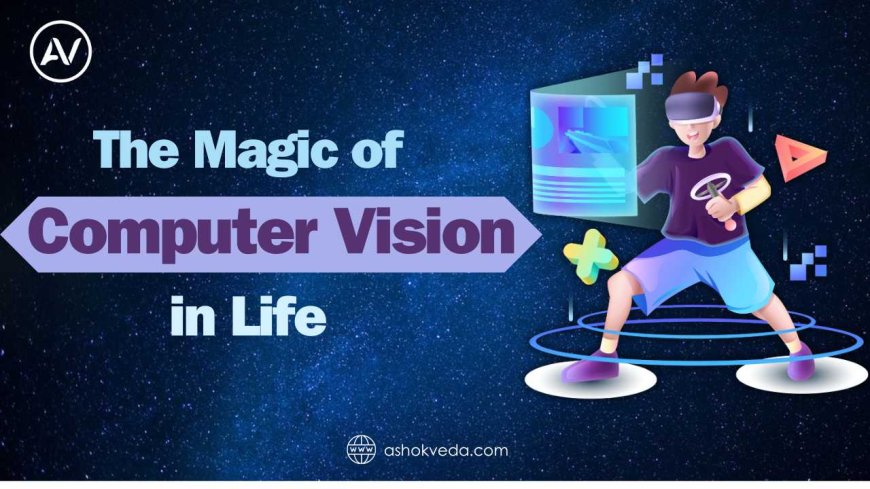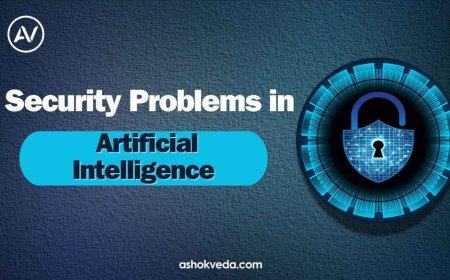How Computer Vision Has Changed Daily Life
Learn how computer vision technology impacts daily activities, from facial recognition to autonomous vehicles, enhancing efficiency and convenience.

Hey, there! Have you thought about how much technology has become a part of our everyday lives? One of the most exciting advancements is something called computer vision. It's almost everywhere now, making our lives easier, safer, and even more enjoyable. we'll look at how computer vision has affected our daily lives, from shopping to staying safe, and much more. will lead you through the amazing ways in which computer vision is changing everyday experiences.
What is computer vision?
Before we get into how Computer Vision has affected our daily lives, we'll explain it quickly. Computer vision is a branch of technology that allows computers to see and understand what is around them. It involves using cameras and software to interpret visual data, much way our brains do with our eyes. It is a subfield of Artificial Intelligence (AI) and Machine Learning that deals with the processing and analysis of visual data from around the world.
Shopping made easy
Have you ever used your smartphone to scan a QR code or learn more about a product? That is Computer Vision in action! Retailers have begun using this technology to improve the shopping experience. Here are a few examples of how it does this:
-
Product Recognition: Imagine strolling into a store and simply pointing your phone at a product to obtain all the information about it, including price, reviews, and even comparable products. This is achievable because of computer vision.
-
Virtual Try-Ons: Trying on clothes or makeup virtually is no longer a distant dream. Apps use computer vision to allow you to see how an item will look on you before purchasing it. This blends Augmented Reality with Image Recognition to provide an effortless experience.
-
Self-Checkout: Many shops now use self-checkout systems that recognize items as you scan them, making the checkout procedure faster and more efficient.
Increasing Safety and Security
Safety and security are two major areas where computer vision has had a big impact. From home security to public safety, this technology is everywhere.
-
Surveillance Systems: Modern security cameras employ computer vision to detect odd activity and notify authorities. Real-time processing helps with crime prevention and public safety.
-
Facial Recognition: This technology is used at airports and other security areas to rapidly identify individuals and ensure that only authorized personnel have access. Biometric authentication is primarily dependent on computer vision.
-
Autonomous Vehicles: Self-driving cars use computer vision to navigate roadways, detect traffic signs, and avoid obstructions. This not only improves driving safety but also productivity, demonstrating the integration of Intelligent Systems.
Healthcare advancements
Computer Vision has transformed the healthcare industry. It allows doctors and medical professionals to give better care in the following ways.
-
Medical Imaging: Computer Vision helps with more accurate analysis of medical imaging such as X-rays and MRIs. This leads to faster and more exact detection utilizing Deep Learning algorithms.
-
Surgery Assistance: Computer Vision systems can help doctors do surgeries by giving real-time images and data, boosting procedure precision.
-
Patient Monitoring: Hospitals utilize this technology to monitor patients' vital signs and detect anomalies early, allowing for timely action. This is part of the larger Digital Transformation in Healthcare.
Transforming Communication
Computer vision has also had an impact on our communication.
-
Video Conferencing: Computer Vision improves image quality, blurs the backdrop, and even adds entertaining filters.
-
Social Media: Have you used a face filter on Instagram or Snapchat? That's Computer Vision at work, making our interactions more engaging and enjoyable using Augmented Reality.
-
Translation Services: Computer Vision powers apps that use your camera to translate text in real-time. Point your camera at a sign in a foreign language, and voila! Instant translation!
Entertainment and Creativity
From movies to video games, computer vision has brought entertainment to new heights.
-
Special Effects: Computer Vision is used in film and television to create amazing visual effects that make the impossible appear real.
-
Gaming: Computer Vision improves gameplay by enabling motion tracking and full immersion with Smart Technology.
-
Art and Design: This technology is used by artists and designers to make digital art and even convert sketches into digital masterpieces, so revolutionizing the digital world.
Improving accessibility
Computer vision makes the world more accessible for people with disabilities:
-
Visual Assistance: Apps that explain the surroundings for visually challenged people rely on computer vision. They can identify things, read writing aloud, and even recognize faces.
-
Sign Language Recognition: This technology interprets sign language, making communication easier for the deaf and hard of hearing.
-
Navigation Aids: Computer vision can help people with mobility difficulties by offering accurate navigation assistance, allowing them to move around more independently.
Revolutionizing Manufacturing
Computer vision improves rules and quality control in the industrial sector.
-
Quality Inspection: Automated systems use Computer Vision to inspect products for flaws, guaranteeing that only high-quality items reach the market.
-
Automation: Computer Vision-equipped robots can undertake complicated activities such as part assembly and product packaging, boosting productivity and reducing errors.
-
Inventory Management: This technology aids in correctly tracking inventory levels, thereby avoiding stockouts and overstock issues. This is part of the Smart Devices manufacturing revolution.
Environmental Impact
Believe it or not, Computer Vision is also helping us take better care of our planet:
-
Wildlife Monitoring: Conservationists use Computer Vision to monitor wildlife populations and track endangered species, aiding in their protection.
-
Pollution Control: Systems that detect and analyze pollutants in the air and water use this technology to provide real-time data, helping in environmental protection efforts.
-
Smart Farming: Farmers use Computer Vision to monitor crop health, optimize irrigation, and manage pests, leading to more sustainable farming practices and leveraging Smart Technology.
Personalized experiences
Computer vision plays an important part in providing personalized experiences for consumers across many platforms:
-
Content Recommendations: Streaming services such as Netflix and YouTube use computer vision to analyze viewing habits and offer content based on user preferences.
-
Personalized Advertising: Advertisers use Computer Vision to assess consumer behaviour and preferences, allowing them to send highly targeted and relevant advertisements.
-
Personalized Interfaces: Devices may now adjust their interfaces to the user's face and expressions, resulting in a more personalized and natural experience.
As you can see, computer vision has changed our daily lives in several ways. This technology is everywhere, from making shopping simpler to increasing safety, healthcare, communication, and even environmental protection. And the best part? It is still changing, which means that more new developments are on the way. So the next time you scan goods, conduct a video conversation or use a face filter, know that it's Computer Vision at work, making your life a little easier and a lot more enjoyable.




































